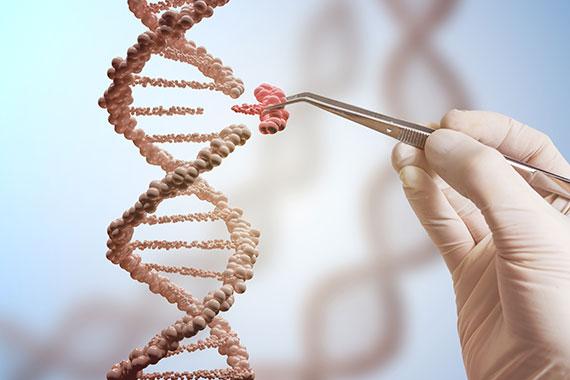The technologies in science fiction films like Gattaca and Blade Runner may seem light-years away, but the development of a gene-editing technique called CRISPR (clustered regularly interspaced short palindromic repeats) is bringing our society closer to these futuristic worlds than ever before.
During her talk titled “CRISPR: The Genome Editing Revolution” on June 29, Assistant Professor of Biology Priscilla Van Wynsberghe spoke to students and faculty about this scientific breakthrough as part of Colgate’s Summertime Lecture Series.
“The science community has had methods to alter a genome directly in a cell, but [these methods] haven’t been as easy to use, as simple, or as fast acting as CRISPR,” Van Wynsberghe said. “It allows [scientists] to make a specific alteration to a nucleic acid in a human cell.”
This summer, Van Wynsberghe and her team of student researchers are using the technology to study the effects of specific proteins on development of the nematode C. elegans.
“One of the ways we can study a protein is by pulling it out and seeing what it’s bound to through immunoprecipitation,” Van Wynsberghe said. “To do that, you need a way to tag your protein to see where your protein is, how much is there, and what it’s binding to. What I’d like to do with CRISPR is engineer a short little ‘tag’ into my protein so that I can specifically, confidently identify it.”
Although scientists first noticed CRISPR in the late 1980s, it wasn’t until 2012 that they announced its potential as a gene-editing tool. Using Cas9, a protein that can create double-stranded breaks in DNA, CRISPR allows for the deletion or insertion of a gene at virtually any location in the genome. As research progresses, the technique could potentially be used to advance our understanding of biological systems; treat genetic diseases caused by a single, known mutation; grow organs for transplantations; and even edit human embryos. However, most traits, including intelligence and height, are impacted by multiple genes and environmental influences, and thus are too complex to be altered by CRISPR technology.
Along with the power of CRISPR comes the need for ethical responsibility. Although the technology has the potential to save lives, it also can be used to genetically modify organisms for reasons other than solving life-threatening problems.
Throughout her talk, Van Wynsberghe posed situational questions to audience members to gauge their thoughts on the ethics of gene editing. When asked if they would be interested in having their genome sequenced, most people said yes; but, when asked if that sequencing information should be used to “fix” errors in their genomes, many weren’t convinced.
“There are going to be so many applications for CRISPR’s use, and we as a society need to have some discussions about if and how much editing is appropriate,” Van Wynsberghe said. “Talking, understanding, and breaking it down is really important.”
